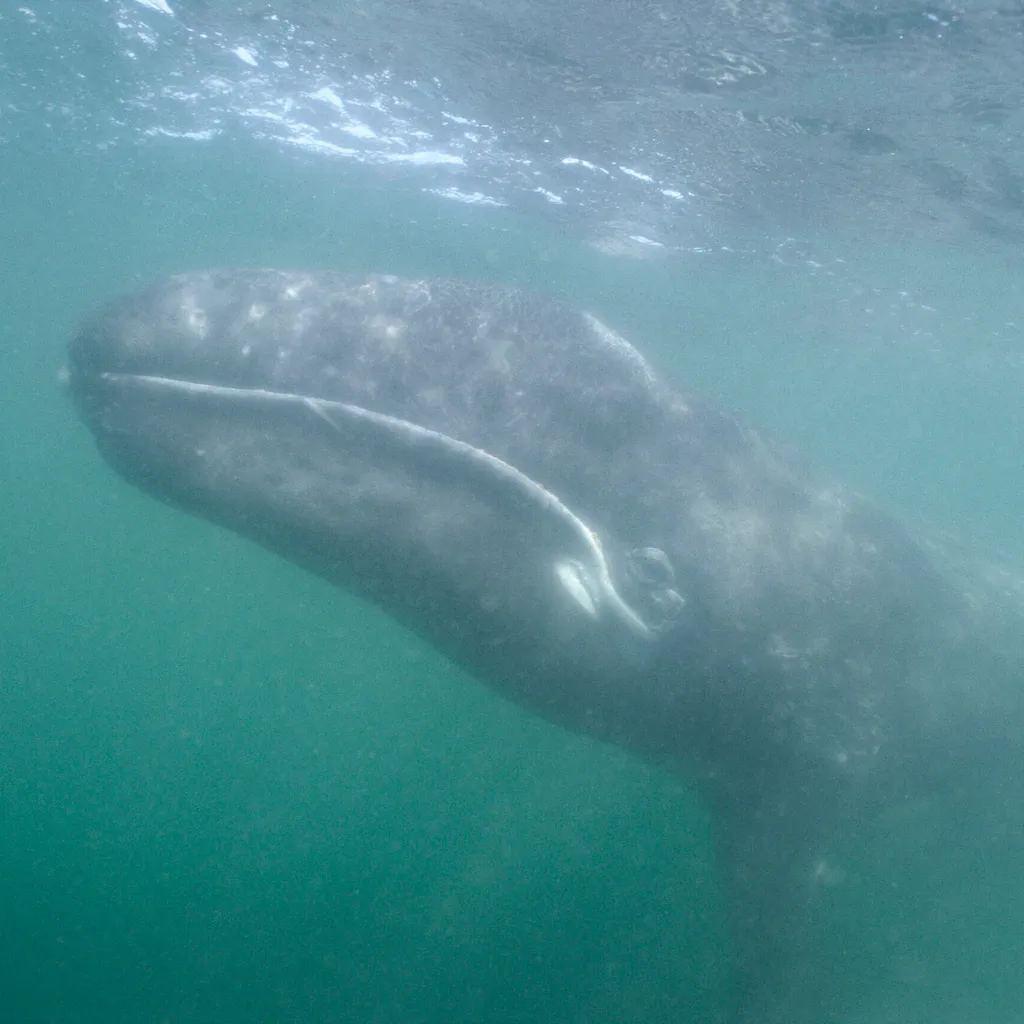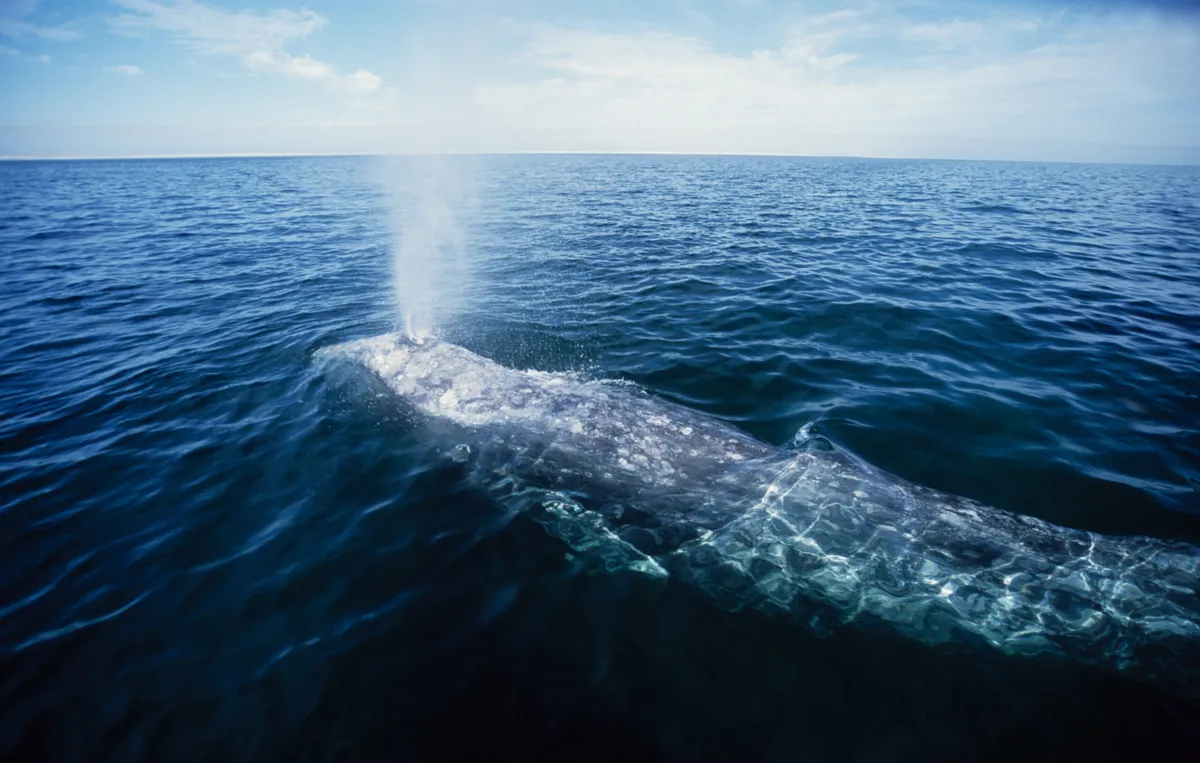What do gray whales look like?
The gray whale has a small, narrow head, which arches distinctively between the blowhole and snout. Flippers are small and paddle-shaped. Instead of a dorsal fin there is a low hump with ‘knuckles' between the hump and the tail. They are usually covered in barnacles.
Gray whales possess individually unique pigmentation and markings that can be used to identify individuals in a population over time.
How big are gray whales?
Gray whales are bigger than orcas but smaller than blue whales. Male gray whales are slightly larger than females at around 15m long, whereas females are 14m.
Adult gray whales weigh around 45,000kg while a calf weighs around 680kg.
Where do gray whales live?
Gray whales are found predominantly in shallow coastal waters of the north Pacific Ocean, rarely venturing more than 20–30kms offshore.
The larger eastern north Pacific population summers and feeds mainly in the shallow waters of the Chukchi and Beaufort seas, and the north western Bering Sea; a few also summer and feed along the Pacific coast from Vancouver Island (Canada) to central California (US). The population migrates in autumn along the coast to winter breeding grounds on the west coast of Baja California (Mexico) and the south eastern Gulf of California.
The much smaller western subpopulation summers in the Okhotsk Sea. The major known feeding grounds are off the north eastern coast of Sakhalin Island (Russian Federation), but some animals are occasionally seen off the eastern coast of Kamchatka (Russian Federation) and in other coastal waters of the northern Okhotsk Sea. This population's migration route is not well known.

What do gray whales eat?
Gray whales are baleen whales so don't have teeth. They feed on the seabed, consuming a wide range of invertebrates.
They hunt seabed creatures by rolling over on one side then swimming slowly along sucking up sediment and the small creatures that live in it. They then sieve out the water and silt through their baleen, trapping the food behind.
What is the lifespan of a gray whale?
Gray whales are thought to live for between 55 and 70 year, but some are found to live longer.
How deep can gray whales dive?
They don’t need to dive deep at all as they are coastal benthic layer feeders, meaning that they find their food on the sea-floor in shallow waters. The main feeding habitat of the western Pacific subpopulation is between 5–15m however they also use habitat up to 35m in depth.
How long can they stay underwater for?
Gray whales can stay underwater for around 20–30 mins.

How fast can they swim?
Gray whales swim between 3–5 mph but can reach higher speeds if in danger. They are often seen with pods of dolphins who like to ride on their ‘bow-waves’.
Do gray whales migrate?
Gray whales undertake one of the world's longest migrations, making a yearly round trip of 15,000–20,000 km.
Do they have any natural predators?
Young calves are a target for hungry orca and sharks. This is why they’re thought to choose secluded, sheltered bays for breeding and nursing. It’s the migratory journey where the dangers lie.
How do they protect themselves?
The large size and powerful tail of the gray whale helps deter attackers.
What is their biggest threat?
The biggest threats to gray whales are coastal development, deep-sea mining, pollution and ship-strikes. Small-scale hunts also exist.
How did they get their name?
Many assume the gray whale is named after its colour – grey – and that the correct spelling should be UK English and is in fact spelt incorrectly, however, the gray whale was first described to science by John Edward Gray in 1865, hence it became the ‘gray whale’.
What is the scientific name of the gray whale?
The scientific name of a gray whale is Eschrichtius robustus.
What is the classification?
Kingdom: Animalia
Phylum: Chordata
Class: Mammalia
Order: Artiodactyla
Infraorder: Cetacea
Family: Eschrichtiidae
Genus: Eschrichtius
Species: E. robustus
Learn all about more species of whale
- Whale shark guide: what they eat, where they're found and why they're endangered
- Bryde whale guide: where they live, what they eat - and why they're rarely seen
- Fin whale guide: how big they are, their lifespan - and just how fast they can swim
- Sperm whale guide: where they live, what they eat and why they are called sperm whales

